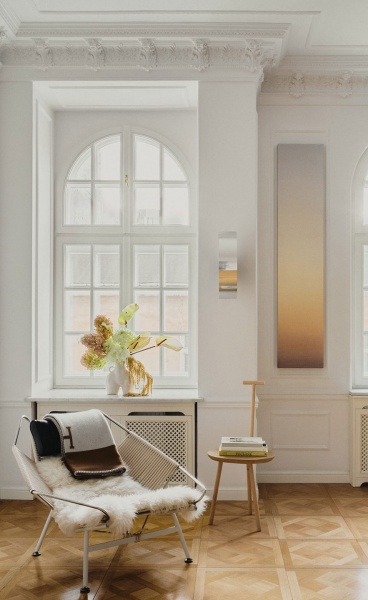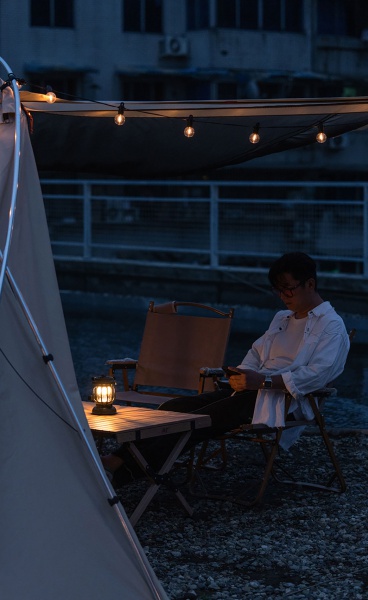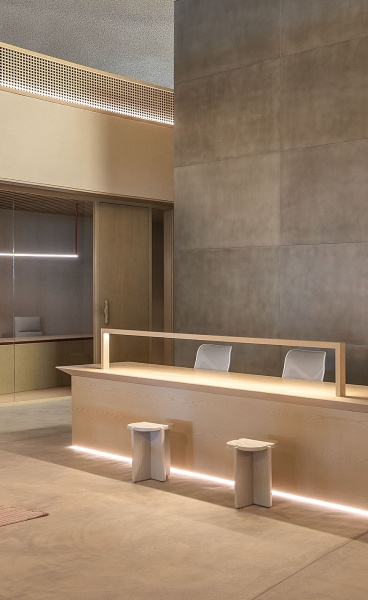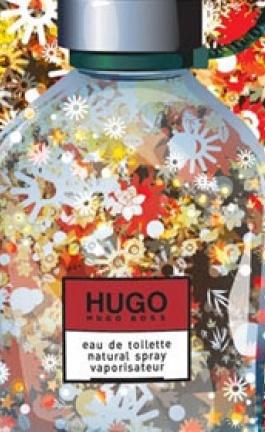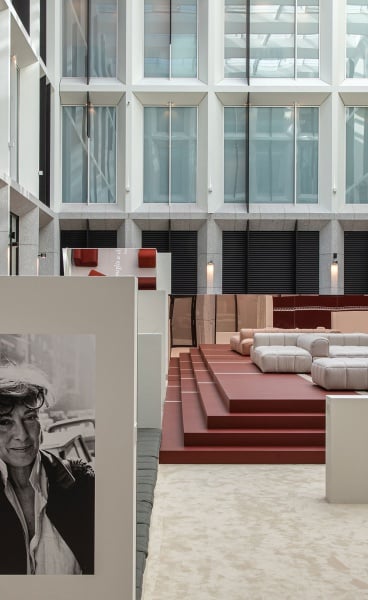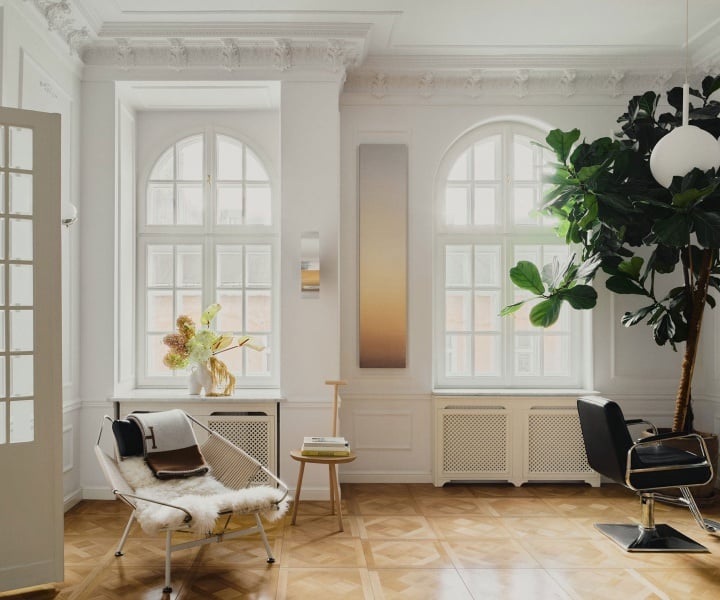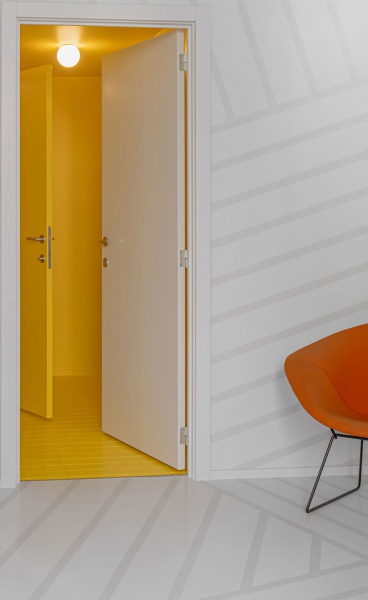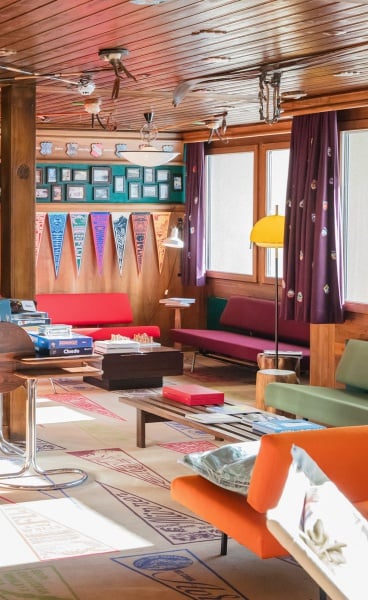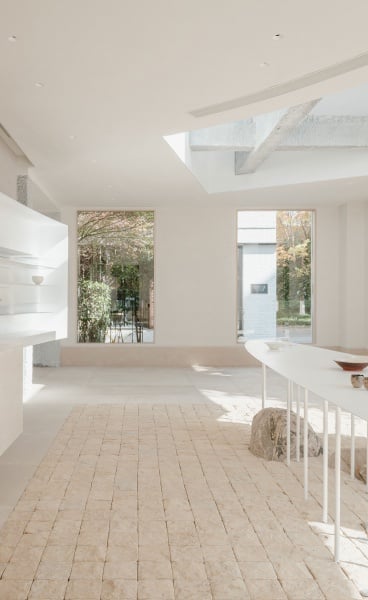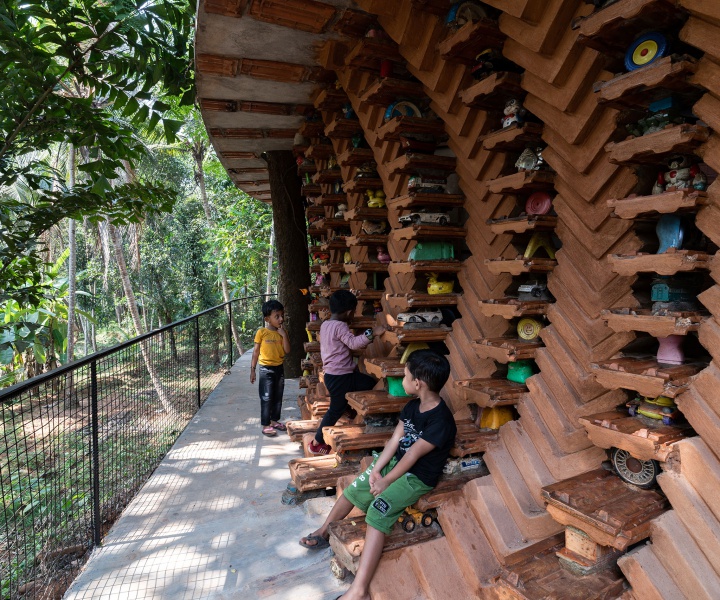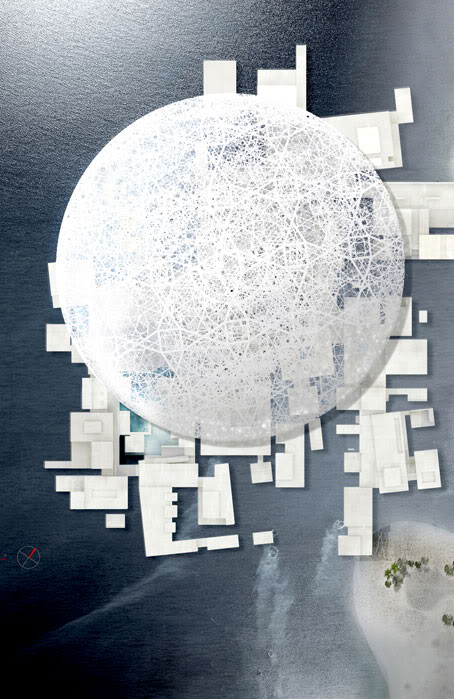
Abu Dhabi Louvre Museum | 2007-in progress
Courtesy Ateliers Jean Nouvel
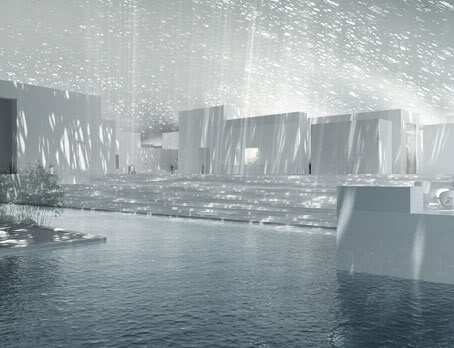
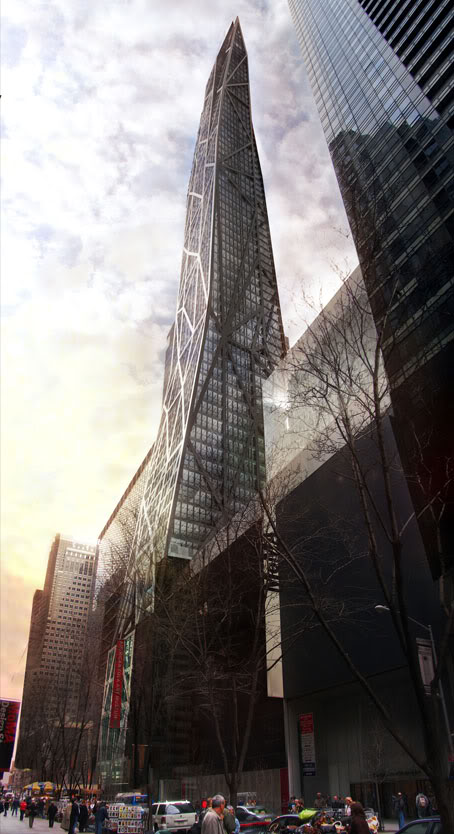
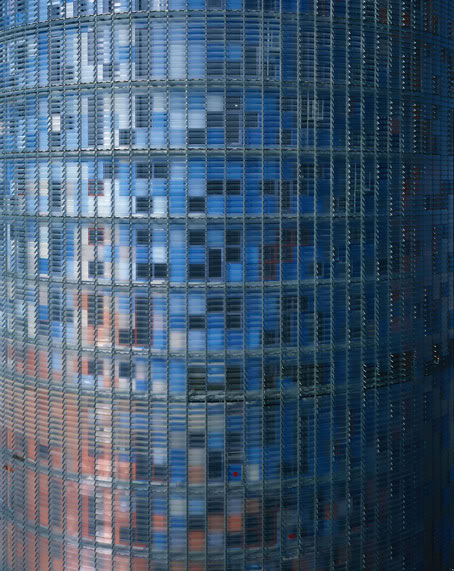
Agbar Tower - Barcelona, Spain 1999-2005 west east section of , photo by Philippe Ruault
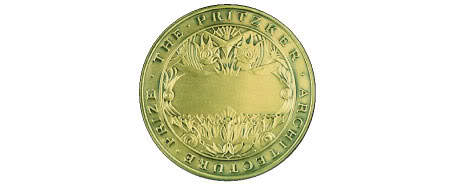
Jean Nouvel of France becomes the 2008 Pritzker Architecture Prize Laureate
Los Angeles, CA—Jean Nouvel of Paris, France has been chosen as the 2008 Laureate of the Pritzker Architecture Prize. The formal ceremony for what has come to be known throughout the world as architecture’s highest honor will be held on June 2 in Washington,D.C. at the Library of Congress. At that time, a $100,000 grant and a bronze medallion will be bestowed on the 62-year old architect.
Nouvel who came to international attention with the completion of his Institut du Monde Arabe (usually referred to as IMA) in 1987 as one of President Francois Mitterand’s Grands Travaux in Paris, now has several projects in the United States, including the Guthrie Theater in Minneapolis completed in 2006, a 75-story tower (Tour Verre) next door to MOMA in New York, and recently announced plans for a high rise condominium (Suncal Tower) in the Century City district of Los Angeles. In Europe, some of his other important works are the Cartier Foundation for Contemporary Art (Paris 1994), the Branly Museum (Paris 2006), the Agbar Tower (Barcelona 2005), a Courthouse (Nantes 2000), a Cultural and Conference Center (Lucerne 2000), an Opera House (Lyon 1993), and Expo 2002 (Switzerland). Also currently under construction is a concert hall in Copenhagen.
Although the bulk of his work is in France, he has designed projects all over the world, including Japan, Spain, England, the Netherlands, Austria, Italy, Czech Republic, Germany, Belgium, Luxembourg, Korea, Mexico, Israel, Brazil, Qatar, Lebanon, Cyprus, Iceland, UAE, Taiwan, Malaysia, Portugal, Kuwait, Morocco, Russia and the U.S.— well over two hundred in all.
In announcing the jury’s choice, Thomas J. Pritzker, chairman of The Hyatt Foundation, quoted from the jury citation, “Of the many phrases that might be used to describe the career of architect Jean Nouvel, foremost are those that emphasize his courageous pursuit of new ideas and his challenge of accepted norms in order to stretch the boundaries of the field.” And further, Pritzker added, “The jury acknowledged the ‘persistence, imagination, exuberance, and, above all, an insatiable urge for creative experimentation’ as qualities abundant in Nouvel’s work.”
In Nouvel’s own words, “My interest has always been in an architecture which reflects the modernity of our epoch as opposed to the rethinking of historical references. My work deals with what is happening now—our techniques and materials, what we are capable of doing today.”
Pritzker Prize jury chairman, The Lord Palumbo elaborated with more of the citation: “Since establishing his Paris based practice in the 1970s, Nouvel has pushed himself, as well as those around him, to consider new approaches to conventional architectural problems. For Nouvel, in architecture there is no “style” a priori. Rather, a context, interpreted in the broadest sense to include culture, location, program and client, provokes him to develop a different strategy for each project.”
Nouvel is the second laureate to be chosen from France, the first being Christian de Portzamparc in 1994. Although 2008 marks the 30th anniversary, he is the 32nd laureate since the prize was founded in 1979. There were two laureates chosen in 1988 and again in 2001.
The purpose of the Pritzker Architecture Prize is to honor annually a living architect whose built work demonstrates a combination of those qualities of talent, vision and commitment, which has produced consistent and significant contributions to humanity and the built environment through the art of architecture.
The distinguished jury that selected Nouvel as the 2008 Laureate consists of its chairman, Lord Palumbo, internationally known architectural patron of London, chairman of the trustees, Serpentine Gallery, former chairman of the Arts Council of Great Britain, former chairman of the Tate Gallery Foundation, and former trustee of the Mies van der Rohe Archive at the Museum of Modern Art, New York; and alphabetically: Shigeru Ban, architect and professor at Keio University, Tokyo, Japan; Rolf Fehlbaum, chairman of the board, Vitra in Basel, Switzerland; Carlos Jimenez, professor, Rice University School of Architecture, principal, Carlos Jimenez Studio in Houston, Texas; Victoria Newhouse architectural historian and author, founder and director of the Architectural History Foundation, New York, New York; Renzo Piano, architect and Pritzker Laureate, of Paris, France and Genoa, Italy; and Karen Stein, writer, editor and architectural consultant in New York. Martha Thorne, formerly a curator of architecture at the Art Institute of Chicago, is executive director.
The prize presentation ceremony moves to different locations around the world each year, paying homage to historic and contemporary architecture. Last year, the ceremony was held in London at the Banqueting House, Whitehall Palace. In 2006, Istanbul, Turkey at the Dolmabahçe Palace was the site. The year before, Chicago’s Jay Pritzker Pavilion, designed by 1989 Pritzker Laureate Frank Gehry, was the venue in that city’s new Millennium Park. The State Hermitage Museum in St. Petersburg, Russia was the site in 2004. Over the years ceremonies have been at the Royal Academy of Fine Arts of San Fernando, Madrid, Spain; Michelangelo’s Campidoglio in Rome, Italy; Thomas Jefferson’s Monticello, in Charlottesville, Virginia; the Jerusalem Archaeological Park, and The White House in Washington, D.C.
The list of venues goes on to include not only a great many of the great museums in the United States, but also many other countries including France, England, the Czech Republic, Germany, Italy, Mexico and Japan.
“For this, our 30th anniversary,” explains Hyatt Foundation President, Thomas Pritzker, “we thought it most appropriate to return to Washington, D.C. where we held the first and 20th ceremonies.”
The late Philip Johnson was the first Pritzker Laureate in 1979. The late Luis Barragán of Mexico was named in 1980. The late James Stirling of the United Kingdom was elected in 1981, Kevin Roche in 1982, Ieoh Ming Pei in 1983, and Richard Meier in 1984. Hans Hollein of Austria was the 1985 Laureate. Gottfried Böhm of Germany received the prize in 1986. The late Kenzo Tange was the first Japanese architect to receive the prize in 1987; Fumihiko Maki was the second from Japan in 1993; and Tadao
Ando the third in 1995. Robert Venturi received the honor in 1991, and Alvaro Siza of Portugal in 1992. Christian de Portzamparc of France was elected Pritzker Laureate in 1994. The late Gordon Bunshaft of the United States and Oscar Niemeyer of Brazil, were named in 1988. Frank Gehry of the United States was the recipient in 1989, the late Aldo Rossi of Italy in 1990. In 1996, Rafael Moneo of Spain was the Laureate; in 1997 Sverre Fehn of Norway; in 1998 Renzo Piano of Italy, in 1999 Sir Norman Foster of the UK, and in 2000, Rem Koolhaas of the Netherlands. In 2001, two architects from Switzerland received the honor: Jacques Herzog and Pierre de Meuron. Australian Glenn Murcutt received the prize in 2002. Jørn Utzon of Denmark was honored in 2003; Zaha Hadid of the UK in 2004; and Thom Mayne of the United States in 2005. Paulo Mendes da Rocha of Brazil was the Laureate in 2006, and Richard Rogers received the prize last year.
The field of architecture was chosen by the Pritzker family because of their keen interest in building due to their involvement with developing the Hyatt Hotels around the world; also because architecture was a creative endeavor not included in the Nobel Prizes. The procedures were modeled after the Nobels, with the final selection being made by the international jury with all deliberations and voting in secret. Nominations are continuous from year to year with hundreds of nominees from countries all around the world being considered each year.
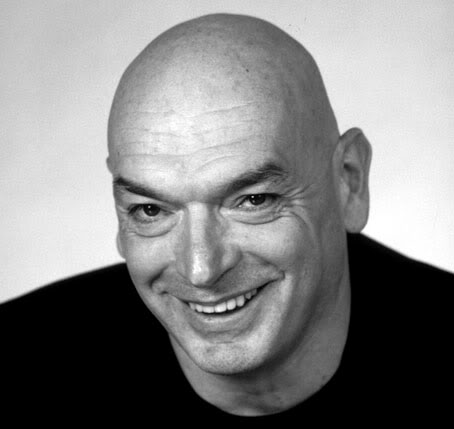
Photo by Gaston Bergeret | Courtesy Ateliers Jean Nouvel
about Jean Nouvel…
“Since the beginning of his architectural career in the 1970s, Frenchman Jean Nouvel has broken the aesthetic of modernism and post-modernism to create a stylistic language all his own. He places enormous importance on designing a building harmonious with its surroundings,” said Bill Lacy in his book, One Hundred Contemporary Architects. Lacy, who was executive director of the Pritzker Architecture Prize from 1988 until 2005 when he retired, continued, “In the end that building’s design may borrow from traditional and nontraditional forms, but its presentation is entirely unique.”
Jean Nouvel’s projects transform the landscapes in which they are built, often becoming major urban events in their own right. His unique approach, driven by the specificities of context, program, and site has proven effective in numerous successes around the world. One such success, a building that first brought Nouvel international recognition is the Institut du Monde Arabe (IMA) in Paris where one of its facades is made entirely of mechanical oculi operated by photoelectric cells that utomatically open and close in response to light levels. The French critic, Alain de Gourcuff, said of it, “The overall effect is at once highly decorative in a Middle Eastern way and projects state-of-the-art electronics.”
Commissioned in 1981 as one of the first Grand Projects initiated by President Francois Mitterand, IMA was completed in 1987 and consists of a museum, a library, temporary exhibit spaces, children’s workshops, a documentation center, an auditorium and a rooftop restaurant. A+U described the building as “a modern western building that pays tribute to Arabic culture.”
The Arab World Institute is just one of more than two hundred projects by Jean Nouvel that the Pritzker Architecture Prize Jury has singled out in its formal citation.
The Guthrie Theater in Minneapolis, Minnesota is another of the projects mentioned in the citation. The Pritzker Jury says of the Guthrie, “The iconic Guthrie Theater in Minneapolis, Minnesota both merges and contrasts with its surroundings. It is responsive to the city and the nearby Mississippi River, and yet, it is also an expression of theatricality and the magical world of performance.”
That “theatricality” is no accident. Nouvel has often compared his role as architect to that of the film director. In an interview published in El Croquis in 2002, he said, “Everything is theatrical. I have worked for a long time as a scenographer, even on social housing…scenography is the relationship between objects and matter that we want to display to somebody who is watching. In effect, in every building there is a way of proving a 360° view over the landscape, as in Lucerne. The use of the word scenography doesn’t bother me as long as it is used in the right sense.” In other interviews, he has often said that architecture and the cinema are very close. “Architecture exists, like cinema, in a dimension of time and movement. One thinks, conceives and reads a building in terms of sequences. To erect a building is to predict and seek effects of contrast and linkage bound up with the succession of spaces through which one passes,” Nouvel explains.
The reference to Lucerne is to his Cultural and Conference Center completed in 2000 in that Swiss city. Nouvel has described it as “an example of the principle of framing the landscape. It is a building on an exceptional site, by the lake, facing the town. The entire town can be seen from the foyer.” The Lucerne Cultural and Conference Center along with the Cartier Foundation in Paris are two more of Nouvel’s completed projects that the Pritzker Jury mentions in their citation as making “dematerialization palpable.” The citation calls attention to Nouvel’s Endless Tower, a 400-meter-high structure for Paris intended to be the tallest building in Europe. For the jury, that project’s importance was “the building’s skin, which changed materials as it progressed upward—from granite to aluminum to stainless steel to glass—becoming increasingly diaphanous before disappearing into the sky.”
Although that tower has never been realized, Nouvel has a project underway in New York City, a mixed use tower next door to the Museum of Modern Art, called Tour de Verre. It was also recently announced that he has designed a high rise condominium, Suncal Tower, for the Century City area of Los Angeles. In the book titled Jean Nouvel - Elements of Architecture, Conway Lloyd
Morgan writes, “Nouvel’s buildings engage our interest through their consistency of purpose, within the range of their visual or technical complexities. Very often the sequence of impressions one of his buildings creates – from distance to
detail, through the arrangement, proportions, and linking of interior elements, in the handling of mass and façade, by the use of color and light – works in harmonious parallel with the purposes and functions of the building: the qualities of commodity, firmness and delight cited centuries ago by Vitruvius.”
The Vitruvius reference was perhaps prophetic. It refers to Ten Books on Architecture dedicated some 2000 years ago to the Roman Emperor Augustus, which Henry Wotton in his 1624 treatise, The Elements of Architecture, translated as: “The end is to build well. Well-building hath three conditions: commodity, firmness and delight.” Those three words, “firmness, commodity and delight,” are inscribed on the Pritzker Medal.
In his own words, Nouvel says, “Critics have defined me as a conceptual architect, that is, one who works more with words than with drawings. I mistrust drawings as fixing things too early in the creative process, while words liberate. I believe the architect is a man who says something.”
Nouvel was born in Fumel in southwestern France in 1945, the son of Roger Nouvel, a history teacher who went on to become the chief county school superintendent, and Renée Nouvel, a high school English teacher. His father’s duties in administration required them to move around frequently, and by the time Jean was eight, they moved to Sarlat, a place Nouvel characterizes as a “medieval town with a lot of architecture.” In those years, he confesses he often slipped out to go to the cinema, an influence that would become important in later years. He was sixteen before one of his professors taught him to draw and truly introduced him to the arts. Up to that time, his parents had placed great emphasis on mathematics and languages. He feels that they were steering him toward a career in education or engineering. When he told them he would like to attend the Beaux Arts school, they objected. A compromise was reached that he would study architecture because being an artist was too risky. Although he failed an entry exam for a school in Bordeaux, when he was twenty, he went to Paris and won first prize in a national competition to attend Beaux Arts there. To earn money while going to school, he took a job in the architecture practice of Claude Parent and Paul Virilio. After being with them for only a year, he was made project manager for an eighty unit apartment complex. By the time he was 25, he had finished school and had his own office in partnership with François Seigneur.
Nouvel credits Parent with guiding jobs to his fledgling office, and perhaps even more importantly, with recommending him for the job of director of the Paris Biennale, which allowed Nouvel to design exhibits for some fifteen years, and make many contacts in the art and theater worlds.
From 1972 to 1984, Nouvel was successively associated with Gilbert Lezenes, Jean-Francois Guyot and Pierre Soria. In 1985, he concurrently founded Jean Nouvel et Associés with three of his junior project architects: Emmanuel Blamont, Jean-Marc Ibos and Mirto Vitart. In 1988, he formed with Emmanuel Cattani, JNEC. Some six years later, in 1994, he created his current firm, Ateliers Jean Nouvel, with Michel Pélissié. His main office in Paris today consists of some 140 people, one of the largest architectural practices in France.
In addition, Ateliers Jean Nouvel has site offices in London, Copenhagen, New York, Rome, Madrid and Barcelona. They count over 40 active projects in 13 countries. The firm has built museums, concert halls, conference centers, theaters, hotels, collective housing, office buildings, commercial centers, and private residences around the world.
Jean Nouvel has two sons with Odile Fillion, who is a film maker. Bertrand, his first born in 1979, is currently doing his post doctorate work in computer science at the University of Chiba in Japan. Pierre, who was born in 1981, is a director, producer and theater designer at Factoid, his own company. Jean Nouvel also has a daughter, Sarah, born in 1994 to his second wife, Catherine Richard. He currently lives with the Swedish architect Mia Hagg whose practice called Habiter Autrement (HA) is in Paris.
For further details on any of Jean Nouvel’s projects, please visit his web site at jeannouvel.com. There you will find descriptions, details, drawings and images. These may be accessed in three different ways, via a location on a world map, by the category of the building, or by a timeline.


